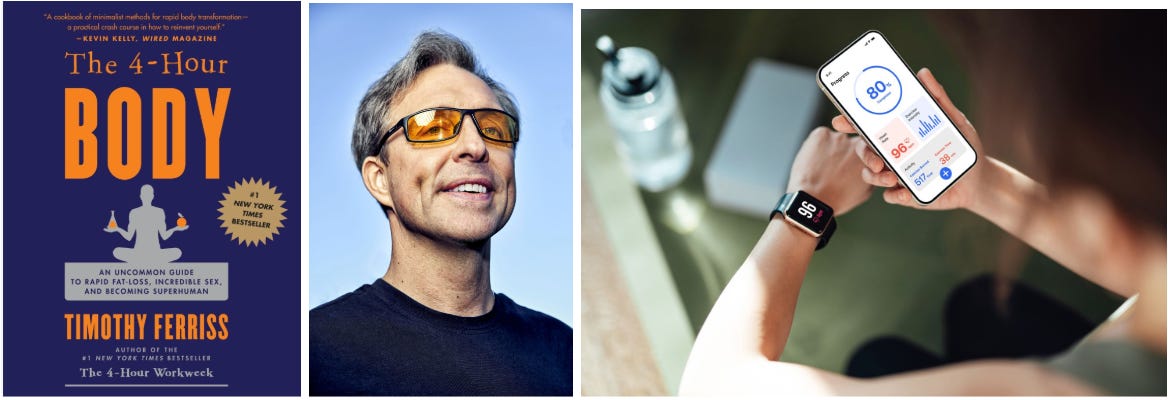We often talk internally about the concept of Medicine 3.0, popularized by Peter Attia– a proactive, personalized, and preventative approach to healthcare that aims to extend both healthspan and lifespan.
While this movement represents a paradigm shift in how we think about health and is often juxtaposed to the prevailing model of reactive care, it did not appear in a vacuum. It’s an evolution and integration of several earlier efforts to fix what was broken in traditional healthcare. Functional medicine, concierge care, and the biohacking movement all pushed the field forward in important ways, but also had real limitations.
If Medicine 3.0 is going to succeed, we need to understand what those earlier movements got right, what they missed, and why this time could be different.
The Evolution of Medicine 3.0
Functional Medicine:
The functional medicine movement emerged in the 1990s aiming to treat the root cause of chronic disease, rather than just the symptoms. It introduced a systems-based approach that integrated lifestyle interventions with both Eastern and Western medicine, and embraced new diagnostic tools– comprehensive labs, genomics, allergy panels, gut health markers, etc.
While the movement became more formalized with the establishment of the Institute for Functional Medicine (1991) and popularized by figures such as Andrew Weil and Mark Hyman, it struggled with standardization, scientific rigor, and a lack of clinical prioritization that often resulted in unfocused care. It was a critical philosophical leap, but didn’t have the framework to scale.
Concierge Medicine:
Around the same time, concierge medicine emerged to address a different set of problems, namely the structural limitations of the existing primary care system– short visits, long wait times, overburdened physicians, and misaligned incentives. Adopting membership models improved the patient-doctor relationship and removed many of the time and incentive constraints of the fee-for-service systems.
But concierge was more of a business model and service innovation than a clinical one, often delivering similar care in a nicer package.
Biohacking and the Optimized Self
Then came biohacking, rising out of tech-forward communities in the 2000s and 2010s. While functional and concierge medicine emerged to address the shortcomings of conventional healthcare, the biohacking movement took these ideas even further by empowering individuals to take control of their own– using wearables, self-tracking tools, supplements, and emerging science to optimize performance and longevity.
Biohacking helped shift the public conversation from disease treatment to health optimization and jumpstarted the consumerization of healthcare. But biohacking was inherently unsystematic. It lacked medical oversight, cherry picked evidence, and was too time-intensive for the everyday consumer.
Medicine 3.0
Medicine 3.0 integrates key principles from each of these models with scientific rigor and operational structure. It combines systems-based medicine with high-touch care and tech-driven optimization. It is not just preventative, but defensive– unapologetically leveraging modern pharmacology and medical advancements (e.g. the aggressive use of statins to lower ApoB). Crucially, it introduces a more rigorous, risk-based approach to clinical decision making, allowing for more personalized care at scale, while also bridging the "translational gap”– the long delay between scientific discovery and clinical adoption.
To deliver on its promise, Medicine 3.0 can’t rely on the infrastructure of traditional health care. The concierge model offers a glimpse into what is possible when providers move beyond the constraints of fee-for-service medicine– more personalized and patient-centric care– but Medicine 3.0 requires a more advanced model built around:
Integrated data and insights: comprehensive testing, continuous monitoring, and AI-powered analysis
Multi-disciplinary care: physicians, health coaches, trainers, and nutritionists all working together
High touch, longitudinal relationships: more time per visit and continuous engagement
Consumer trust: to support earlier, more experimental interventions (this is part of why with think brand is so important for the next generation of consumer health platforms)
Engagement: motivated consumers willing to invest in their own health and a new type of physician that is dynamically engaged in research
Why This Time Will Be Different
The obvious question is why will Medicine 3.0 succeed in scaling where other movements have failed. Many of the same structural barriers still exist– payors are not incentivized to reimburse preventative care, fee-for-service practice models focus on volume, employment-based insurance limits continuity, medical specialities are siloed, and many interventions (diet, lifestyle, exercise) live outside of the traditional healthcare system. But the underlying conditions are changing:
Affordability: Tech and business model innovation have exponentially decreased the cost of diagnostics, while clinical prioritization and scientific rigor provide a more viable path towards payor reimbursement.
Accessibility: Covid-19 forced a mass shift towards telehealth and virtual care, while AI is augmenting clinical touchpoints at a fraction of the cost
Culture: Functional medicine was too fringe, concierge care too elite, and biohacking for the tech-bros and athletes. But the cultural environment has shifted rapidly. Doctors have become mainstream influencers, health and wellness has become a top priority for consumers (and something they are willing to spend on), and individuals are more health-literate than ever before.
Consumerization of Healthcare: moving healthcare into the consumer domain is allowing for more seamless integration between lifestyle and clinical intervention
Ticking Time Bomb: Healthcare costs have reached 20% of GDP, driven by chronic disease, and there is increasing urgency and political firepower behind these issues
Medicine 3.0 is no longer just a vision, but beginning to take shape across a range of emerging models– from full-stack longevity clinics to digitally native platforms, and everything in between. We are still in the early innings, but I believe we are at an inflection point where technology and culture are intersecting in a way to make this future more and more possible.








